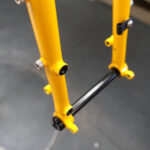Cycling is a fantastic way to stay active, explore the outdoors, and commute efficiently. However, for many women, discomfort in the saddle area can quickly turn the joy of riding into a pain. If you’re experiencing persistent discomfort, sharp pain, or numbness while cycling, especially in your vulva or surrounding soft tissues, it’s crucial to understand that this isn’t something you just have to endure. The good news is that often, the solution lies in adjusting your current setup or choosing the right ladies bike seat.
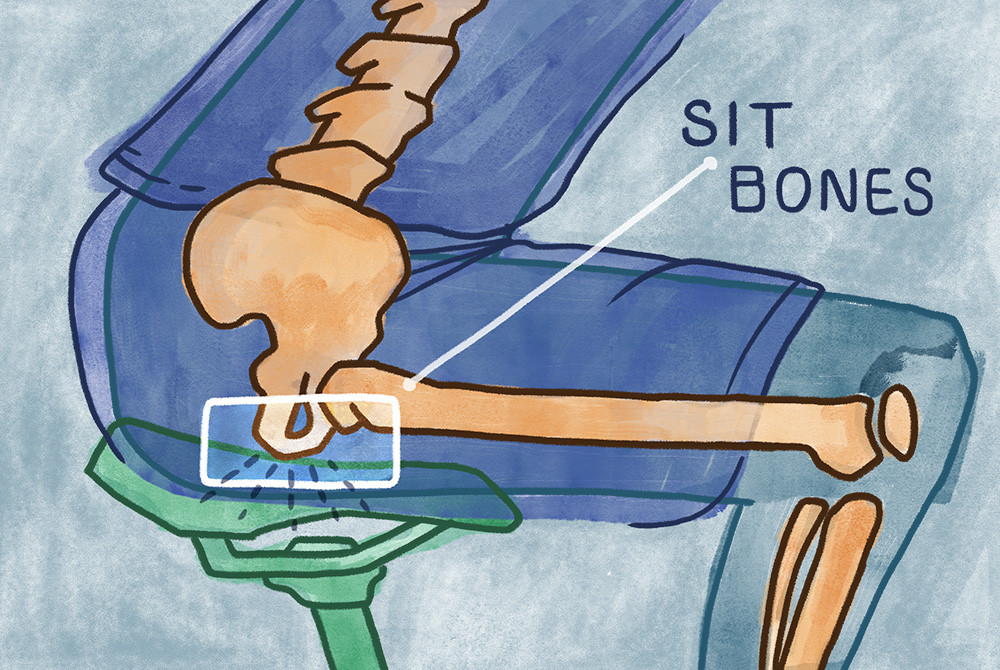 Illustration explaining sit bones in relation to a bicycle saddle.
Illustration explaining sit bones in relation to a bicycle saddle.
Why “Crotch Pain” Happens to Women on Bikes
Many women experience saddle discomfort because traditional bike seats are often designed with male anatomy in mind. The primary issue leading to pain for women is excessive pressure on the vulva. Ideally, when you’re seated on your bike, your weight should be supported by your sit bones, the bony protrusions at the base of your pelvis. If your bike seat doesn’t properly accommodate a woman’s wider sit bone structure or if it’s positioned incorrectly, too much pressure can be placed on the sensitive soft tissues of the vulva (labia and surrounding areas). This pressure can lead to pain, swelling, and even numbness.
Incorrect saddle adjustment – including height, tilt, and fore/aft position – is a major culprit. An ill-fitting bike itself can also contribute to the problem. And, of course, selecting the wrong type of ladies bike seat in the first place can set you up for discomfort from the get-go. Remember, there’s no universal “perfect” bike setup; it’s about finding what works best for your body and your individual riding style. Comfort on a bike is deeply personal and relies on how your body feels while you’re riding.
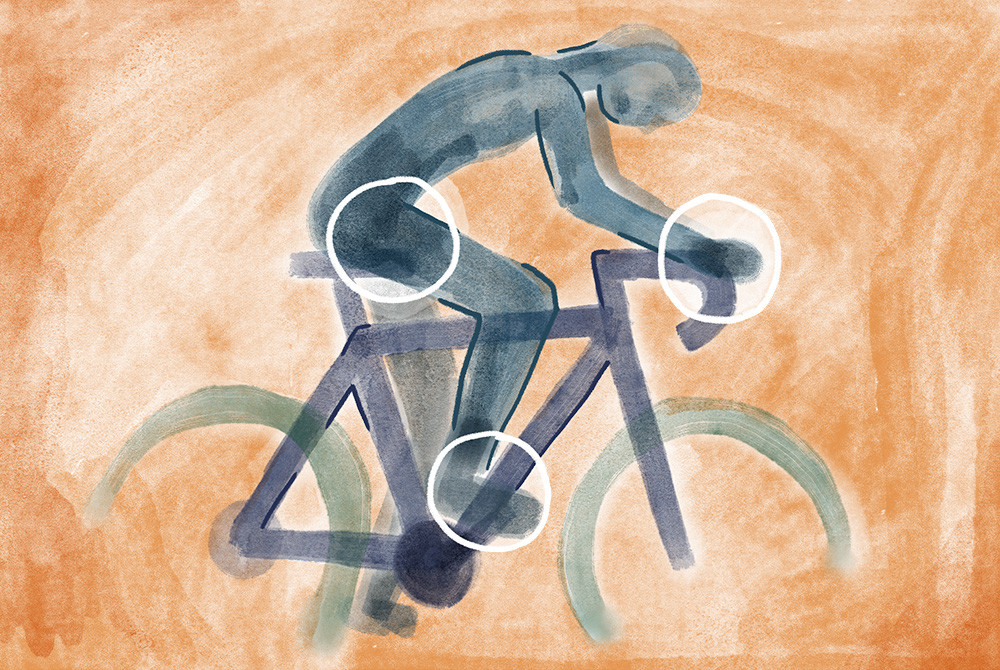 An illustration showing the three main contact points on a bicycle.
An illustration showing the three main contact points on a bicycle.
Fine-Tuning Your Ride: Saddle Height Adjustment
Saddle height plays a critical role in distributing your weight across the three primary contact points when cycling: your feet, your hands, and your ladies bike seat. If your saddle is too high or too low, it can shift weight improperly, forcing more pressure onto your crotch. A general rule of thumb is to aim for a slight bend in your knee when your leg is fully extended at the bottom of the pedal stroke. Make small adjustments to your saddle height, testing after each change, until you achieve a balanced feeling across all three contact points as you ride. This balance is key to reducing pressure on your sensitive areas and maximizing comfort with your ladies bike seat.
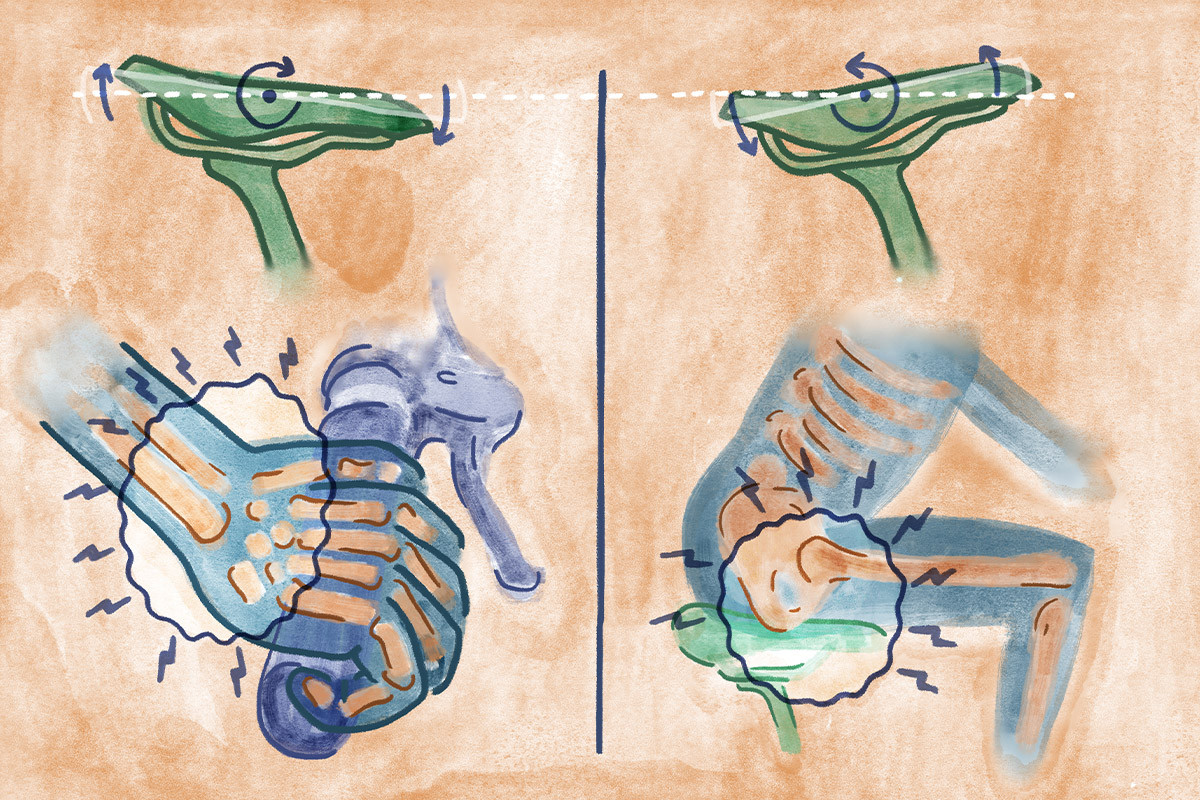 Illustrates the effect of tilting a bike saddle too far up or down.
Illustrates the effect of tilting a bike saddle too far up or down.
Saddle Tilt: Achieving a Neutral and Comfortable Position
Saddle tilt is another essential adjustment for optimizing your ladies bike seat for comfort. Start by setting your saddle to a neutral, horizontal position. Avoid tilting the nose of the saddle too far upwards, as this can dig uncomfortably into your soft tissues. Conversely, tilting it too far downwards can cause you to slide forward, placing pressure on the narrower front portion of the seat. A downward tilt can also shift excessive weight onto your hands, potentially leading to wrist pain. Small adjustments to the tilt of your ladies bike seat can make a significant difference in pressure distribution and overall comfort.
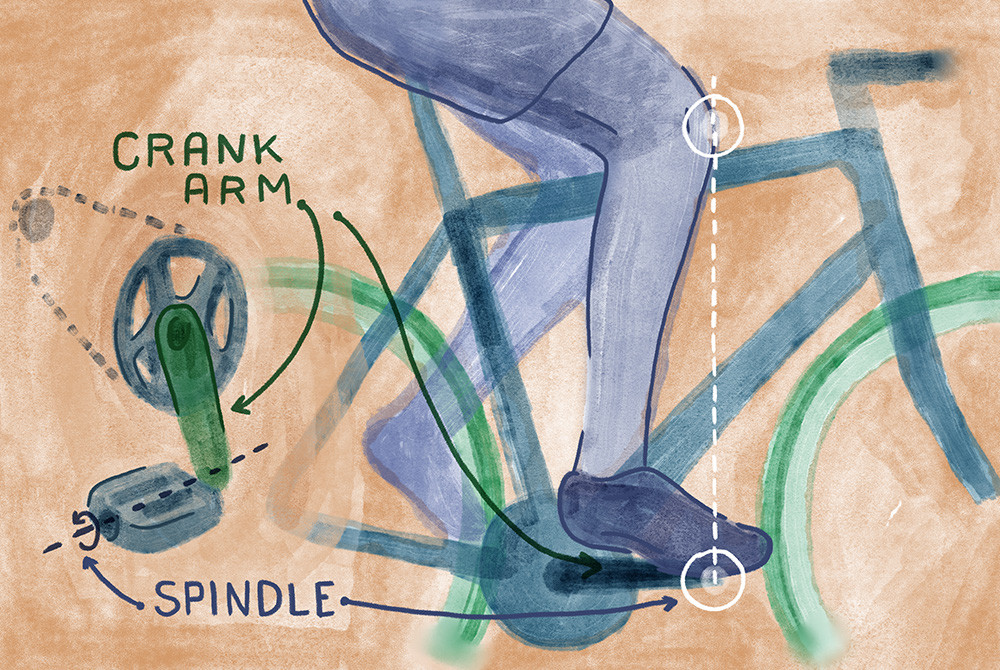 Illustrates a tip for setting the fore/aft position of your bicycle saddle.
Illustrates a tip for setting the fore/aft position of your bicycle saddle.
Fore/Aft Saddle Position: Balancing Efficiency and Comfort
The fore/aft position of your ladies bike seat also impacts both comfort and pedaling efficiency. A common guideline for beginners is to check your knee position when the crank arm (the arm connecting the pedal to the bike frame) is horizontal to the ground. Ideally, your kneecap should be positioned directly above the pedal spindle (the center of the pedal).
While some cyclists use a plumb bob to precisely measure this alignment, focusing on the general principle is often sufficient. The important takeaway is that the fore/aft position of your ladies bike seat is adjustable and affects your overall bike fit and saddle comfort. If you’re unsure where to start, position the saddle in the middle of its adjustment range and then make small adjustments forward or backward as needed. Experiment to find the position that feels most balanced and comfortable for your individual body and riding style on your ladies bike seat.
The Bigger Picture: Bike Fit Matters
While adjusting your ladies bike seat is crucial, remember that it’s only one piece of the bike fit puzzle. Your body and your bicycle are complex systems that need to work together harmoniously. If you’ve meticulously adjusted your saddle height, tilt, and fore/aft position and are still experiencing discomfort, the issue might stem from a broader bike fit problem.
For instance, a bike frame that is the wrong size (either too large or too small) can throw off your entire riding posture and place undue pressure on your saddle area, even with the best ladies bike seat. Similarly, the height and reach of your handlebars also play a role in weight distribution and overall comfort. If you suspect a more fundamental fit issue, consider seeking a professional bike fit assessment at a reputable bike shop or consult with a physical therapist specializing in cycling. They can analyze your riding posture and bike geometry to identify and address any underlying fit problems that might be contributing to saddle discomfort, even with a well-chosen ladies bike seat.
Choosing the Right Ladies Bike Seat: A Matter of Personal Anatomy
After addressing saddle adjustments and bike fit, if you’re still battling saddle pain, it might be time to consider a new ladies bike seat. A significant factor contributing to discomfort for women is that many standard bike saddles are designed primarily for male anatomy. Women generally have wider sit bones than men, and therefore often benefit from a wider saddle that provides better support.
Fortunately, the cycling industry has recognized this need, and there are now many excellent Ladies Bike Seats specifically designed to accommodate female anatomy. These saddles often feature wider platforms and strategically placed cutouts or channels to relieve pressure on the vulva and soft tissues.
Selecting the right ladies bike seat is a very personal process. What feels amazing to one woman might be uncomfortable for another due to variations in anatomy and riding style. The best approach is to try out different saddles if possible. Many bike shops offer demo programs that allow you to test ride different ladies bike seats before making a purchase. This hands-on approach is invaluable in finding a saddle that truly feels good for you.
Getting Back in the Saddle and Enjoying the Ride
Experiences with saddle discomfort are common among cyclists, and many women have stories of awkward and painful situations related to their bike seats. However, the key takeaway is that saddle pain is solvable. It might require some experimentation and adjustments, but finding a comfortable setup with the right ladies bike seat is achievable.
The goal of cycling is enjoyment and healthy activity, not enduring unnecessary pain. If cycling becomes a pain in the crotch, take it as a signal that it’s time to troubleshoot. Whether it’s a minor adjustment or a new ladies bike seat, taking the time to address saddle discomfort will be well worth it. Your body will thank you, and you’ll be able to fully enjoy the freedom and pleasure of cycling without pain.
Nuts and Bolts: Troubleshooting Ladies Bike Seat Discomfort
Here’s a quick checklist to address crotch pain while riding and find the right ladies bike seat solution:
- Saddle Adjustments First: Systematically adjust your current saddle height, tilt, and fore/aft position. Make small changes and test ride after each adjustment.
- Evaluate Overall Bike Fit: Consider if your bike frame size and handlebar setup are appropriate for your body. A professional bike fit can be beneficial.
- Explore Ladies Bike Seat Options: If adjustments and bike fit don’t resolve the issue, research and try out different ladies bike seats designed for female anatomy. Look for wider saddles with pressure-relief features.

